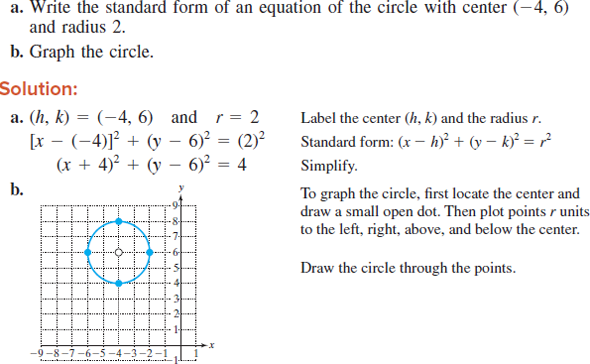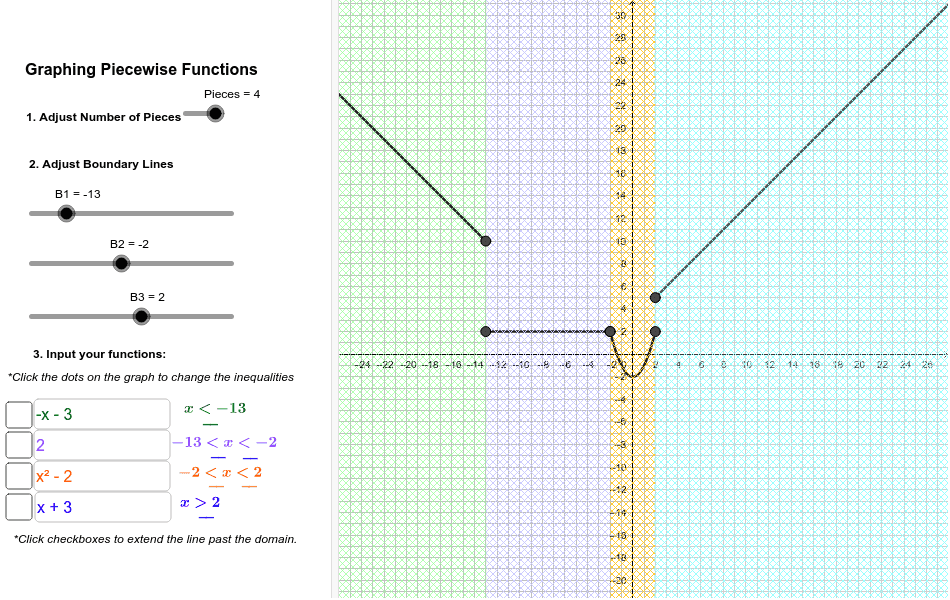

Finding the ARCSIN of our decimal value gives us our angle. Now we just need to find the ARCSIN button on our calculator, which is often labeled as SIN -1. That will give us a value between 0 and 1. Then we take the side opposite that angle and divide it by the length of the hypotenuse, which is side c. Once we have all the sides we determine which angle we’re going to find. To start we’ll need to know all the side lengths, so if we don’t know them already we’ll use the Pythagorean Theorem to find them first. We just need to find one special button on our handheld calculators. To find the angles of a right triangle we use trigonometry.
Circle equation maker how to#
How to find the Angles of a Right Triangle If we only know two of the sides we need to use the Pythagorean Theorem first to find the third side. To find the perimeter, or distance around, our triangle we simply need to add all three sides together. How to find the Perimeter of a Right Triangle So our new formula for right triangle area is A = ab/2. height/2) and substitute a and b for base and height.So we use the general triangle area formula (A = base That’s because the legs determine the base and the height of the triangle in every right triangle. To find the area of a right triangle we only need to know the length of the two legs. Then we solve for b using simple algebra (subtract the value of a squared from both sides, then take the square root of both sides). When we’re trying to find one of the legs we enter the known leg for a and the known hypotenuse for c. Then we solve for c by adding the squared values of a and b and taking the square root of both sides. It doesn’t matter which leg is a and which is b. When we’re trying to find the hypotenuse we substitute our two known sides for a and b. Right triangles have two legs and a hypotenuse, which is the longest side and is always across from the right angle. We need to be a little careful that we know which side we’re finding. To find the missing side of a right triangle we use the famous Pythagorean Theorem. How to find the Missing Side of a Right Triangle Amazing, right? Let’s review how we would find each of those parts. If we know just two sides of a right triangle, we can use that information to find the third side, the area and perimeter of the triangle, and all the angles of the triangle. How to Find the Area and Sides of a Right Triangle Do it yourself The calculator will then determine the length of the remaining side, the area and perimeter of the triangle, and all the angles of the triangle. Just enter your example and it will be solved.To use the right angle calculator simply enter the lengths of any two sides of a right triangle into the top boxes. Example:Īnd how is the general formula for the vertex point? Btw: Whenever there is a negative number in front of the, the parabola is open downward. (Unfortunately, many people do not think about such stuff and simply use the binomial formula even if it is not possible… More unfortunately, terms cannot cry ""OUCH!"", but just math teachers can when they see such a calculation.) And if there is a minus in front of the ? It is important to factor out first and complete the square afterwards. And if there is a number in front of the ? So simply add the right number and subtract it at the same time.

This does only work if there is the right number (the number completing the square). Furthermore, one sees from this calculation that you just have to use the binomial formula backwards: Build a binomial formula out of the function term. :PĪs you can see, the x-coordinate of the vertex equals the number in brackets, but only up to change of signs.

Here is an example:ĭein Browser unterstützt den HTML-Canvas-Tag nicht. You have to complete the square: Take the number in front of x, divide it by and square the result.

This means: If the vertex form is, then the vertex is at (h|k). From the vertex form, it is easily visible where the maximum or minimum point (the vertex) of the parabola is: The number in brackets gives (trouble spot: up to the sign!) the x-coordinate of the vertex, the number at the end of the form gives the y-coordinate. The vertex form is a special form of a quadratic function.


 0 kommentar(er)
0 kommentar(er)
